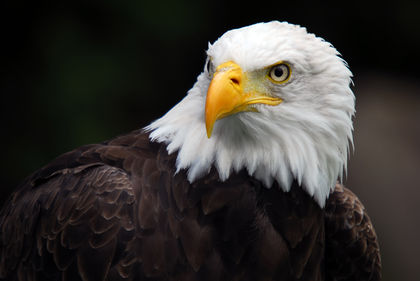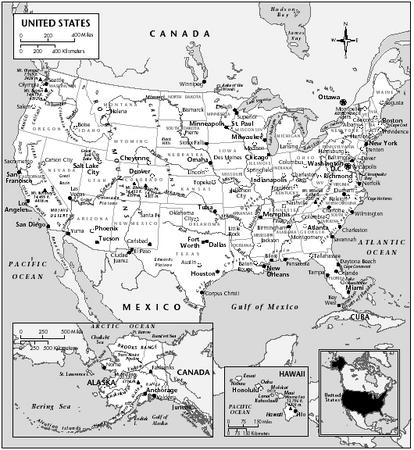United States - Flora and fauna

At least 7,000 species and subspecies of indigenous US flora have been categorized. The eastern forests contain a mixture of softwoods and hardwoods that includes pine, oak, maple, spruce, beech, birch, hemlock, walnut, gum, and hickory. The central hardwood forest, which originally stretched unbroken from Cape Cod to Texas and northwest to Minnesota—still an important timber source—supports oak, hickory, ash, maple, and walnut. Pine, hickory, tupelo, pecan, gum, birch, and sycamore are found in the southern forest that stretches along the Gulf coast into the eastern half of Texas. The Pacific forest is the most spectacular of all because of its enormous redwoods and Douglas firs. In the southwest are saguaro (giant cactus), yucca, candlewood, and the Joshua tree.
The central grasslands lie in the interior of the continent, where the moisture is not sufficient to support the growth of large forests. The tall grassland or prairie (now almost entirely under cultivation) lies to the east of the 100th meridian. To the west of this line, where rainfall is frequently less than 50 cm (20 in) per year, is the short grassland. Mesquite grass covers parts of west Texas, southern New Mexico, and Arizona. Short grass may be found in the highlands of the latter two states, while tall grass covers large portions of the coastal regions of Texas and Louisiana and occurs in some parts of Mississippi, Alabama, and Florida. The Pacific grassland includes northern Idaho, the higher plateaus of eastern Washington and Oregon, and the mountain valleys of California.
The intermontane region of the Western Cordillera is for the most part covered with desert shrubs. Sagebrush predominates in the northern part of this area, creosote in the southern, with saltbrush near the Great Salt Lake and in Death Valley.
The lower slopes of the mountains running up to the coastline of Alaska are covered with coniferous forests as far north as the Seward Peninsula. The central part of the Yukon Basin is also a region of softwood forests. The rest of Alaska is heath or tundra. Hawaii has extensive forests of bamboo and ferns. Sugarcane and pineapple, although not native to the islands, now cover a large portion of the cultivated land.
Small trees and shrubs common to most of the United States include hackberry, hawthorn, serviceberry, blackberry, wild cherry, dogwood, and snowberry. Wildflowers bloom in all areas, from the seldom-seen blossoms of rare desert cacti to the hardiest alpine species. Wildflowers include forget-me-not, fringed and closed gentians, jack-in-the-pulpit, black-eyed Susan, columbine, and common dandelion, along with numerous varieties of aster, orchid, lady's slipper, and wild rose.
An estimated 432 species of mammals characterize the animal life of the continental United States. Among the larger game animals are the white-tailed deer, moose, pronghorn antelope, bighorn sheep, mountain goat, black bear, and grizzly bear. The Alaskan brown bear often reaches a weight of 1,200–1,400 lbs. Some 25 important furbearers are common, including the muskrat, red and gray foxes, mink, raccoon, beaver, opossum, striped skunk, woodchuck, common cottontail, snowshoe hare, and various squirrels. Human encroachment has transformed the mammalian habitat over the last two centuries. The American buffalo (bison), millions of which once roamed the plains, is now found only on select reserves. Other mammals, such as the elk and gray wolf, have been restricted to much smaller ranges.
Year-round and migratory birds abound. Loons, wild ducks, and wild geese are found in lake country; terns, gulls, sandpipers, herons, and other seabirds live along the coasts. Wrens, thrushes, owls, hummingbirds, sparrows, woodpeckers, swallows, chickadees, vireos, warblers, and finches appear in profusion, along with the robin, common crow, cardinal, Baltimore oriole, eastern and western meadowlarks, and various blackbirds. Wild turkey, ruffed grouse, and ring-necked pheasant (introduced from Europe) are popular game birds.
Lakes, rivers, and streams teem with trout, bass, perch, muskellunge, carp, catfish, and pike; sea bass, cod, snapper, and flounder are abundant along the coasts, along with such shellfish as lobster, shrimp, clams, oysters, and mussels. Garter, pine, and milk snakes are found in most regions. Four poisonous snakes survive, of which the rattlesnake is the most common. Alligators appear in southern waterways and the Gila monster makes its home in the Southwest.
Laws and lists designed to protect threatened and endangered flora and fauna have been adopted throughout the United States. Generally, each species listed as protected by the federal government is also protected by the states, but some states may list species not included on federal lists or on the lists of neighboring states. (Conversely, a species threatened throughout most of the United States may be abundant in one or two states.) As of August 2003, the US Fish and Wildlife Service listed 987 endangered US species (up from 751 listed in 1996), including 65 mammals (64 in 1996), 78 birds (77 in 1996), 71 fish (69 in 1996), and 599 plants (432 in 1996); and 276 threatened species (209 in 1996), including 147 plants (94 in 1996). The agency listed another 517 endangered and 41 threatened foreign species by international agreement.
Threatened species, likely to become endangered if recent trends continue, include such plants as Lee pincushion cactus. Among the endangered floral species (in imminent danger of extinction in the wild) are the Virginia round-leaf birch, San Clemente Island broom, Texas wild-rice, Furbish lousewort, Truckee barberry, Sneed pincushion cactus, spineless hedgehog

cactus, Knowlton cactus, persistent trillium, dwarf bear-poppy, and small whorled pogonia.
Endangered mammals included the red wolf, black-footed ferret, jaguar, key deer, northern swift fox, San Joaquin kit fox, jaguar, jaguarundi, Florida manatee, ocelot, Florida panther, Utah prairie dog, Sonoran pronghorn, and numerous whale species. Endangered species of rodents included the Delmarva Peninsula fox squirrel, beach mouse, salt-marsh harvest mouse, 7 species of bat (Virginia and Ozark big-eared Sanborn's and Mexican long-nosed, Hawaiian hoary, Indiana, and gray), and the Morro Ba, Fresno, Stephens', and Tipton Kangaroo rats and rice rat.
Endangered species of birds included the California condor, bald eagle, three species of falcon (American peregrine, tundra peregrine, and northern aplomado), Eskimo curlew, two species of crane (whooping and Mississippi sandhill), three species of warbler (Kirtland's, Bachman's, and golden-cheeked), dusky seaside sparrow, light-footed clapper rail, least tern, San Clemente loggerhead shrike, bald eagle (endangered in most states, but only threatened in the Northwest and the Great Lakes region), Hawaii creeper, Everglade kite, California clapper rail, and red-cockaded woodpecker. Endangered amphibians included four species of salamander (Santa Cruz long-toed, Shenandoah, desert slender, and Texas blind), Houston and Wyoming toad, and six species of turtle (green sea, hawksbill, Kemp's ridley, Plymouth and Alabama red-bellied, and leatherback). Endangered reptiles included the American crocodile, (blunt nosed leopard and island night), and San Francisco garter snake.
Aquatic species included the shortnose sturgeon, Gila trout, eight species of chub (humpback, Pahranagat, Yaqui, Mohave tui, Owens tui, bonytail, Virgin River, and Borax lake), Colorado River squawfish, five species of dace (Kendall Warm Springs, and Clover Valley, Independence Valley, Moapa and Ash Meadows speckled), Modoc sucker, cui-ui, Smoky and Scioto madtom, seven species of pupfish (Leon Springs, Gila Desert, Ash Meadows Amargosa, Warm Springs, Owens, Devil's Hole, and Comanche Springs), Pahrump killifish, four species of gambusia (San Marcos, Pecos, Amistad, Big Bend, and Clear Creek), six species of darter (fountain, watercress, Okaloosa, boulder, Maryland, and amber), totoaba, and 32 species of mussel and pearly mussel. Also classified as endangered were two species of earthworm (Washington giant and Oregon giant), the Socorro isopod, San Francisco forktail damselfly, Ohio emerald dragonfly, three species of beetle (Kretschmarr Cave, Tooth Cave, and giant carrion), Belkin's dune tabanid fly, and 10 species of butterfly (Schaus' swallowtail, lotis, mission, El Segundo, and Palos Verde blue, Mitchell's satyr, Uncompahgre fritillary, Lange's metalmark, San Bruno elfin, and Smith's blue).
Several species on the federal list of endangered and threatened wildlife and plants are found only in Hawaii. Endangered bird species in Hawaii included the Hawaiian dark-rumped petrel, Hawaiian gallinule, Hawaiian crow, three species of thrush (Kauai, Molokai, and puaiohi), Kauai 'o'o, Kauai nukupu'u, Kauai 'alialoa, 'akiapola'au, Maui'akepa, Molokai creeper, Oahu creeper, palila, and 'o'u.
Endangered plants in the United States include: aster, cactus, pea, mustard, mint, mallow, bellflower and pink family, snapdragon, and buckwheat.
Threatened fauna include the grizzly bear, southern sea otter, Newell's shearwater, eastern indigo snake, bayou darter, several southwestern trout species, and Schaus swallowtail butterfly. Species formerly listed as threatened or endangered that have been removed from the list include (with delisting year and reason) American alligator (1987, recovered); coastal cutthroat trout (2000, taxonomic revision); Bahama swallowtail butterfly (1984, amendment); gray whale (1994, recovered); brown pelican (1984, recovered); Rydberg milk-vetch (1987, new information); Lloyd's hedgehog cactus (1999, taxonomic revision), and Columbian white-tailed Douglas County Deer (2003, recovered).